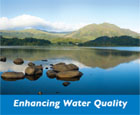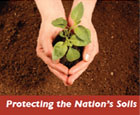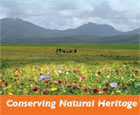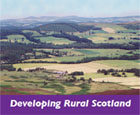Knowledge Transfer/Exchange (KT/E) Strategy 2006 - 2011
   
Purpose
This document provides the overall Knowledge Transfer/Exchange (KT/E) Strategy for the Scottish Government Rural Environment Research and Analysis Directorate’s (RERAD) commissioned research programme on Environment – Land Use and Rural Stewardship. The Strategy provides the overall context for the individual KT/E plans developed for each of the four programme objectives, and it supports the delivery of these. This document is intended for those individuals and teams involved in commissioning, managing and delivering the RERAD commissioned research programme.
Terminology
There has been a fundamental change in thinking about “knowledge transfer” over the past decade. The original concept of “knowledge transfer” (‘getting innovations out of the laboratory and into the work place’) has largely been overtaken by the concept of “knowledge exchange”. This reflects new thinking about effective science communication. With “knowledge transfer”, the communication between scientists and their audience groups is seen as a predominantly one-way process, involving a simple transfer of knowledge from one party to the another (knowledge deficit model). With “knowledge exchange”, the communication between scientists and their stakeholder groups is seen as an interactive two-way process, with stakeholder involvement throughout the research cycle (co-construction or social learning model). The main argument for the latter approach is that it is more likely to satisfy stakeholder needs and it is therefore more relevant in an applied science context.
In reality, there is no single best approach to effective science communication. These changes in thinking are more a reflection of our increased awareness of the need to adopt different approaches depending on the audience and the purpose of the communication. By adopting an audience-focused philosophy, it is possible to develop a strategy which embraces this spectrum of science communication approaches, with one-way “knowledge transfer” (KT) activities at one end and highly interactive two-way “knowledge exchange” (KE) activities at the other. Hence, this present strategy, based on just such an audience-focused approach, is described as a “knowledge transfer/exchange” (KT/E) strategy. Our challenge is to tailor our approaches to the requirements of the different audiences for our science.
|